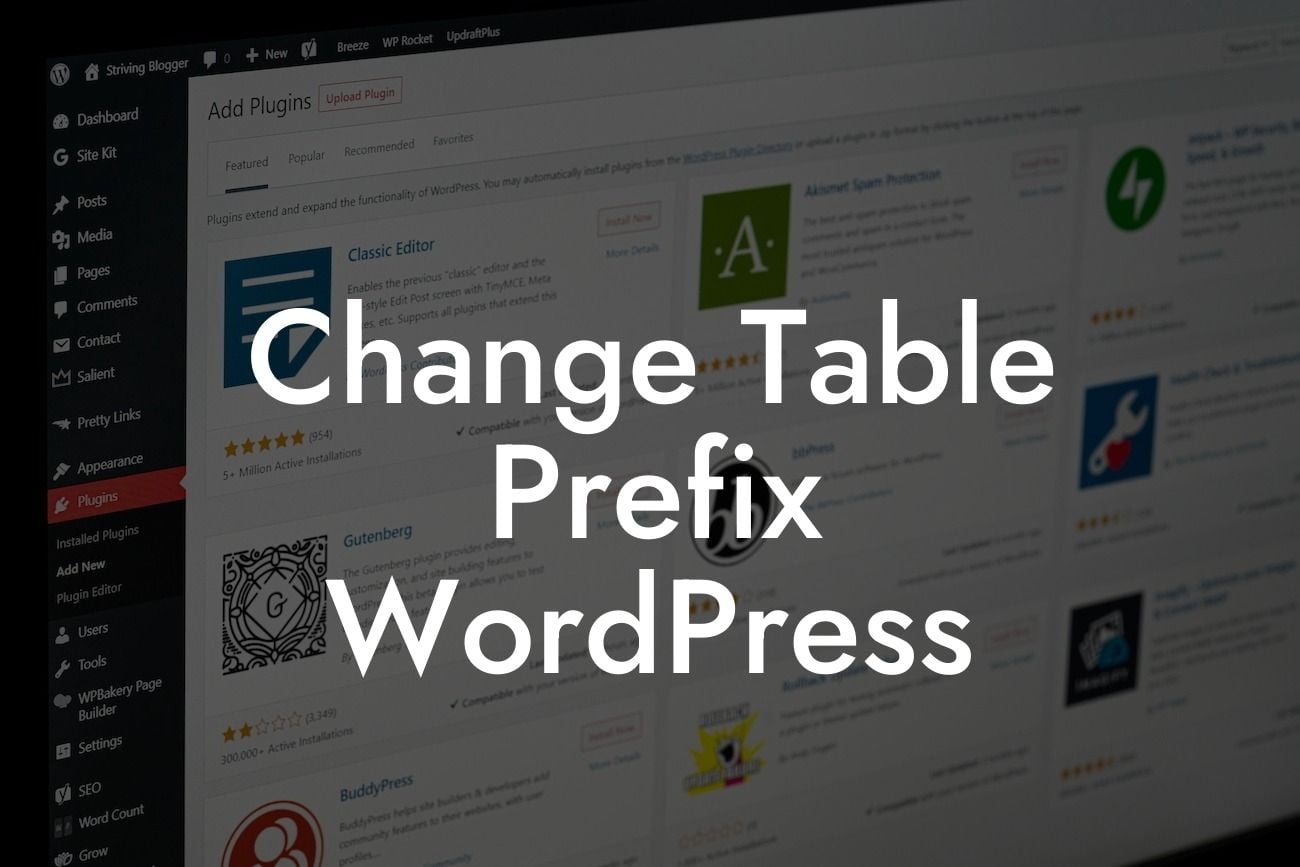When it comes to securing your WordPress website, one powerful technique is to change the table prefix. By default, WordPress uses the "wp_" prefix for all its database tables, making it easier for hackers to identify and exploit vulnerabilities. In this article, we will guide you through the process of changing the table prefix, allowing you to enhance the security of your WordPress site and protect sensitive information.
Changing the table prefix is relatively simple, but it requires some technical knowledge. Here's a detailed step-by-step guide to help you:
1. Backup your WordPress site: Before making any changes, it's crucial to create a backup of your entire WordPress site. This ensures that you can revert to the previous state if anything goes wrong during the process.
2. Update your wp-config.php file: Access your WordPress files through FTP or the file manager in your hosting control panel. Locate the wp-config.php file, which contains the database settings. Open it and look for the line that defines the table prefix (usually defined as $table_prefix = 'wp_';).
3. Generate a unique table prefix: Choose a unique and random prefix for your tables. Avoid using common prefixes like "wp_" or "wp2_". You can use a combination of letters, numbers, and special characters to make it more robust and less predictable.
Looking For a Custom QuickBook Integration?
4. Rename database tables: Open your database management tool (usually phpMyAdmin) provided by your hosting provider. Locate the WordPress database and find the tables with the existing prefix. Rename each table by replacing the old prefix with the new one. Ensure that you rename all tables associated with the WordPress installation.
5. Update wp-config.php with the new prefix: Edit the wp-config.php file again and replace the existing table prefix with the newly chosen one. Save the changes and close the file.
Change Table Prefix Wordpress Example:
Let's say your selected table prefix is "dcw_". After following the above steps, your wp-config.php file should have this line: $table_prefix = 'dcw_';. Correspondingly, the tables in your database would have been renamed from "wp_posts" to "dcw_posts", "wp_users" to "dcw_users", and so on.
Congratulations! You have successfully changed the table prefix in WordPress, significantly improving the security of your website. Remember to regularly update your WordPress version, themes, and plugins, and stay vigilant against potential vulnerabilities. Explore other insightful guides on DamnWoo to further enhance your WordPress experience. Don't forget to check out our awesome plugins, designed exclusively for small businesses and entrepreneurs like you. If you found this article helpful, share it with others who can benefit from it.













